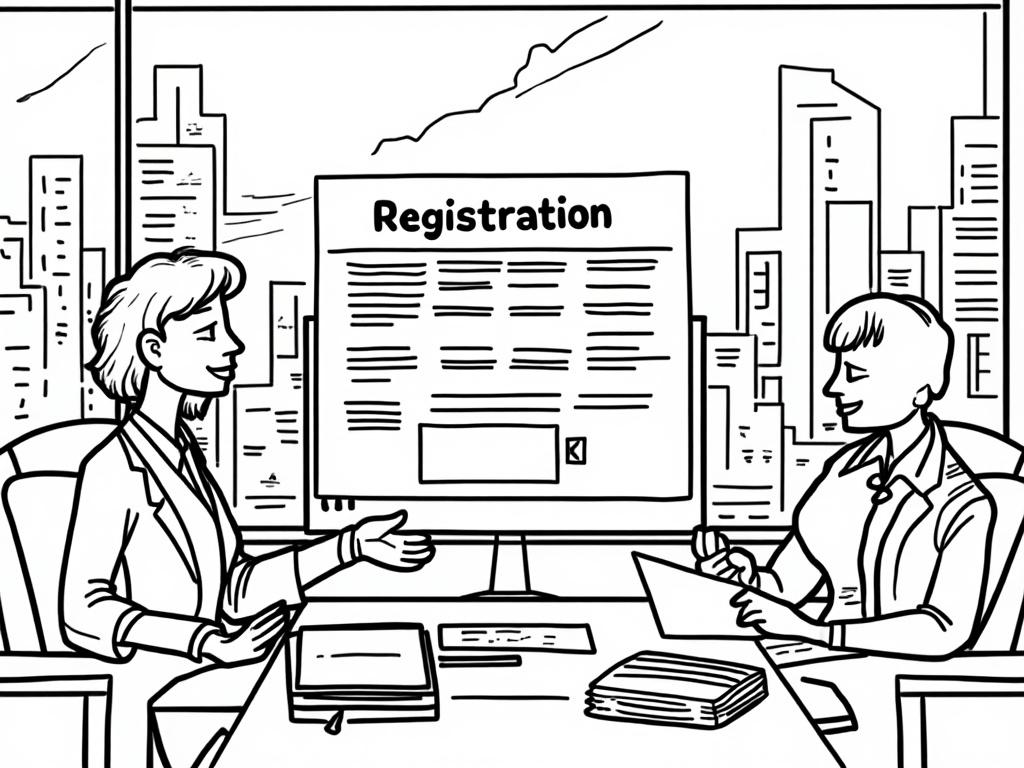
After Business Name Registration: Your Complete Next-Steps Blueprint
Reading time: 12 minutes
Table of Contents
- Why Post-Registration Steps Matter More Than You Think
- Immediate Priorities: Your First 30 Days
- Building Your Financial Foundation
- Legal Compliance and Protection Strategies
- Operational Setup for Long-term Success
- Digital Presence and Marketing Foundations
- Business Setup Comparison by Entity Type
- Avoiding Common Post-Registration Pitfalls
- Frequently Asked Questions
- Your Strategic Roadmap Forward
Why Post-Registration Steps Matter More Than You Think
Congratulations! You’ve successfully registered your business name. But here’s the reality check: **registration is just the starting line, not the finish**. Studies show that 67% of new businesses fail within their first five years, and poor post-registration planning is a major contributing factor.
Think of business name registration like getting a driver’s license—it gives you permission to operate, but it doesn’t teach you how to navigate complex traffic or avoid accidents. The real work begins now.
Quick Reality Check: Sarah, a graphic designer from Portland, registered her business name “Creative Canvas Studio” in January. By March, she was scrambling to understand why the IRS was sending notices, her bank rejected her first business check, and a competitor was already using a similar name online. Her mistake? Treating registration as completion rather than commencement.
The post-registration phase is where strategic thinking transforms good intentions into sustainable business operations. Let’s dive into your comprehensive action plan.
Immediate Priorities: Your First 30 Days
Verify and Secure Your Registration
Before celebrating, ensure your registration is bulletproof. Contact your state’s business registration office to confirm your filing was processed correctly. Request official documentation—you’ll need these certificates for banking, licensing, and tax purposes.
**Pro Tip:** Download digital copies and store them in a secure cloud folder. Physical documents get lost; digital ones create backups that save time and money later.
Conduct a Comprehensive Name Search
Registration doesn’t guarantee exclusivity. Perform a thorough search across:
– Federal trademark databases
– Domain name availability
– Social media platforms
– Google search results for similar businesses
Case Study: Marcus registered “TechFlow Solutions” in Nevada, only to discover three months later that a California company with the same name had federal trademark protection. The legal battle cost him $15,000 and forced a complete rebrand. A $500 trademark search would have prevented this disaster.
Building Your Financial Foundation
Open Your Business Bank Account Strategically
Separating personal and business finances isn’t just good practice—it’s legal protection. But choosing the right account matters more than you might think.
**Essential Banking Checklist:**
– Compare monthly fees across 3-5 banks
– Evaluate transaction limits and overage charges
– Consider integration with accounting software
– Assess online banking capabilities
– Review credit-building opportunities
Many entrepreneurs choose the first bank they visit, costing themselves hundreds annually in unnecessary fees. Credit unions often offer better terms than major banks, especially for small businesses.
Establish Business Credit Early
According to Nav’s 2023 Small Business Credit Survey, businesses with established credit profiles are 70% more likely to secure funding when needed. Start building credit immediately by:
1. Applying for a business credit card with your bank
2. Establishing trade lines with suppliers
3. Monitoring your business credit score monthly
4. Maintaining low credit utilization ratios
Legal Compliance and Protection Strategies
Tax Registration: Beyond the Basics
Tax registration isn’t one-size-fits-all. Your requirements depend on your business structure, location, and industry. Here’s the strategic approach:
**Federal Requirements:**
– Apply for an Employer Identification Number (EIN) through the IRS website
– Determine your tax classification (sole proprietorship, partnership, corporation)
– Understand quarterly estimated tax obligations
**State and Local Requirements:**
– Register for state income tax (varies by state)
– Apply for sales tax permits if selling tangible goods
– Research local business tax requirements
Expert Insight: “Most new business owners underestimate the complexity of tax compliance,” says Jennifer Martinez, CPA and small business advisor. “Setting up proper tax systems from day one prevents costly corrections and penalties later.”
Licenses and Permits: Industry-Specific Requirements
License requirements vary dramatically by industry and location. Common categories include:
– **Professional licenses**: Required for healthcare, legal, financial services
– **Occupational licenses**: Needed for trades like plumbing, electrical work
– **Business operation permits**: Health department permits for food service
– **Special industry permits**: Liquor licenses, transportation permits
Research your specific requirements through your state’s business portal and local chamber of commerce.
Operational Setup for Long-term Success
Accounting Systems: Your Business Intelligence Hub
Proper accounting isn’t just about tax compliance—it’s your business intelligence system. Choose accounting software that grows with your business:
**For Service-Based Businesses:** QuickBooks Online, FreshBooks, or Wave
**For Product-Based Businesses:** QuickBooks Enterprise, NetSuite, or Zoho Books
**For E-commerce:** Integration with Shopify, WooCommerce, or BigCommerce
Set up these essential financial tracking categories from day one:
– Revenue by service/product line
– Expense categories for tax deduction optimization
– Client/customer payment tracking
– Cash flow projections
Insurance Protection: Strategic Risk Management
Business insurance isn’t an expense—it’s an investment in continuity. Essential coverage includes:
**General Liability Insurance:** Protects against third-party claims
**Professional Liability Insurance:** Covers errors and omissions
**Property Insurance:** Protects business assets and equipment
**Workers’ Compensation:** Required if you have employees
Industry-specific insurance needs vary significantly. A consulting firm needs different coverage than a manufacturing business.
Digital Presence and Marketing Foundations
Securing Your Digital Real Estate
Your digital presence starts with owning your online identity:
1. **Domain Registration**: Secure your primary domain and common variations (.com, .net, .org)
2. **Social Media Handles**: Claim your business name across major platforms
3. **Google My Business**: Essential for local search visibility
4. **Website Development**: Even a simple landing page establishes credibility
Success Story: Lisa’s bakery “Sweet Moments” secured her digital presence immediately after registration. When a local competitor tried to launch with a similar name six months later, Lisa’s established online presence and Google My Business listing gave her clear market advantage and customer recognition.
Business Setup Comparison by Entity Type
| Entity Type | Tax Complexity | Setup Timeline | Annual Compliance | Estimated Costs |
|---|---|---|---|---|
| Sole Proprietorship | Simple | 1-2 weeks | Minimal | $50-$300 |
| LLC | Moderate | 2-4 weeks | Annual reports | $500-$1,500 |
| S-Corporation | Complex | 3-6 weeks | Quarterly filings | $1,000-$3,000 |
| C-Corporation | Very Complex | 4-8 weeks | Extensive reporting | $2,000-$5,000 |
Avoiding Common Post-Registration Pitfalls
The “Set It and Forget It” Trap
Many entrepreneurs believe registration equals completion. This mindset creates three critical vulnerabilities:
1. **Compliance Drift**: Missing annual report deadlines or tax filings
2. **Brand Dilution**: Allowing competitors to claim similar digital spaces
3. **Financial Chaos**: Mixing personal and business expenses
The Perfectionism Paralysis
Waiting for the “perfect” setup before launching costs more than iterating as you grow. Start with essential systems and upgrade based on actual needs, not imagined requirements.
Underestimating Ongoing Costs
Post-registration expenses add up quickly. Budget for:
– Annual state filing fees
– Accounting software subscriptions
– Insurance premiums
– Professional service fees
– Marketing and advertising costs
Frequently Asked Questions
How long does it typically take to complete all post-registration steps?
Most businesses can complete essential post-registration steps within 60-90 days. However, the timeline depends on your business complexity and industry requirements. Simple service businesses might finish in 30 days, while regulated industries like healthcare or finance may require 6+ months for full compliance. The key is prioritizing steps: banking and tax registration first, followed by licensing and insurance.
Can I change my business name after registration, and what are the implications?
Yes, but it’s complex and costly. Name changes require filing amendments with your state, updating all legal documents, notifying banks and creditors, rebranding marketing materials, and potentially losing established credit history. Costs range from $500-$5,000 depending on your business structure. This is why thorough name research before registration is crucial—prevention is far cheaper than correction.
What happens if I skip some of these post-registration steps?
Skipping steps creates cascading risks. Operating without proper tax registration can result in penalties and back-taxes. Missing insurance coverage leaves you vulnerable to lawsuits that could bankrupt your business. Ignoring licensing requirements can result in fines or forced closure. Each skipped step compounds risk and costs. However, you can catch up—prioritize tax and legal compliance first, then work through operational setup systematically.
Your Strategic Roadmap Forward
You’ve moved beyond the registration milestone—now it’s time to build your business empire systematically. Here’s your actionable 90-day roadmap:
**Days 1-30: Foundation Phase**
• Verify registration completeness and secure documentation
• Open business banking accounts and establish initial credit
• Complete tax registrations (federal, state, local)
• Research and apply for essential licenses and permits
**Days 31-60: Protection Phase**
• Implement accounting systems and financial tracking
• Secure appropriate business insurance coverage
• Trademark your business name if applicable
• Establish digital presence and secure online assets
**Days 61-90: Growth Phase**
• Develop comprehensive business plan and marketing strategy
• Build operational systems and customer acquisition processes
• Create ongoing compliance calendar and monitoring systems
• Plan for scaling and expansion opportunities
The businesses that thrive aren’t necessarily those with the best initial ideas—they’re the ones that execute post-registration strategy with precision and consistency. Your registration was just the first step in a marathon, not a sprint.
As artificial intelligence and automation reshape business landscapes, the companies that establish robust operational foundations now will be best positioned to leverage these technological advantages. Your systematic approach to post-registration setup isn’t just about compliance—it’s about creating competitive advantages that compound over time.
**What’s your biggest challenge in moving from registration to operational success, and which of these strategic steps will you tackle first?**

